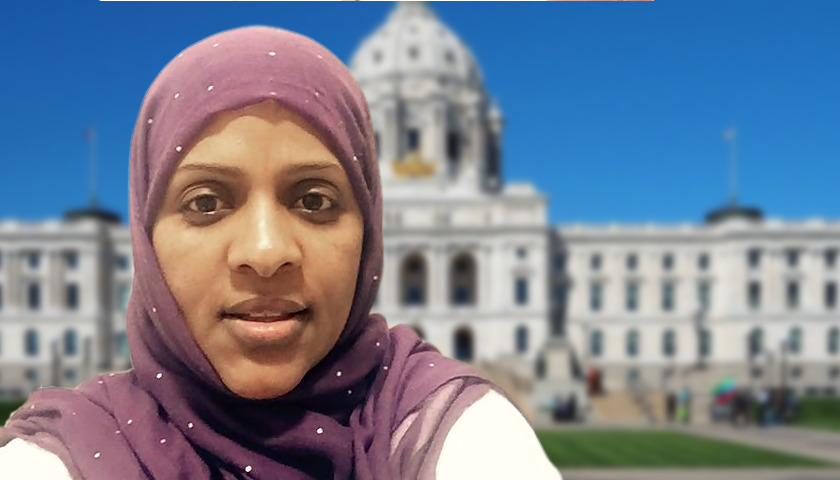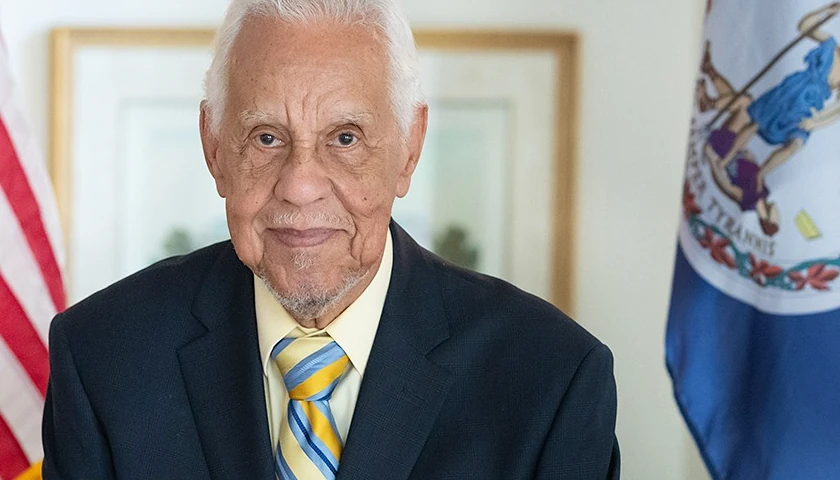The Population Reference Bureau (PRB)’s estimate that over 500,000 women and girls in the U.S. are at risk for female genital mutilation (FGM), has been confirmed by an updated analysis issued by the Centers for Disease Control (CDC).
Within state rankings, Minnesota ranks 3rd behind California and New York, states with high number of foreign-born arrivals, for FGM risk, Minneapolis-St. Paul-Bloomington, MN-WI area is ranked 3rd among top metro areas, Rochester and St. Cloud as the 28t and 47th respectively, where women and girls are potentially at risk for genital mutilation.
Despite the significant risk to women and girls from having their genitals mutilated and the prosecutions of Minnesota mothers who took their daughters to Michigan to have their genitals cut – the first prosecutions of its kind – the Minnesota state legislature has failed to pass legislation specific to their state’s problems with FGM.
Among other aspects of the 2017 bill, it would have held parents and guardians accountable for subjecting their minor child to FGM. The bill also sought to enhance education and outreach activities in the community and for medical professionals. The bill passed the House 124 – 4 but was not put to a vote in the Senate. The 2018 bill was introduced in the Senate, was recommended for passage by the assigned committee, but was not put to a floor vote nor was a House companion bill filed.
Each time a bill was introduced, members from the immigrant communities strenuously objected.
The Council for Minnesotans of African Heritage and a Minneapolis-based grassroots organization called Isuroon lobbied legislators to kill the “overly harsh” bill. As to the 2018 bill, Isuroon founder, Somali Fartun Weli (pictured) who promotes herself as a public health practitioner, has been highly critical of state legislators crafting Minnesota public policy on FGM in an effort to better protect women and girls from having their genitals mutilated. Weli has accused lawmakers efforts as serving to “further victimize [FGM] survivors and their families.”
But Weli didn’t stop there choosing instead to accuse lawmakers of being Islamophobic, xenophobic and racist in their intentions using the trifecta of slurs most likely to kill a bill in a state with concentrated communities of African immigrants:
the Legislature continues to target Minnesota Muslims with Islamophobic, xenophobic and racist legislation. This FGC bill is a faux attempt to “protect young Muslim girls from Sharia Law.” It is a xenophobic political strategy to prove that politicians are “taming” new immigrants who are attacking the American way.” FGC practice has nothing to with Islam.
The CDC’s 2016 updated report notes a three-fold increase from earlier estimates in U.S. risk for FGM and a four-fold increase of risk for girls in the U.S. younger than 18 years old. The CDC’s data analysis showed that “the total number of women and girls in the United States at risk for FGM/C (cutting)*, or its consequences increased by 224%, from 168,000 to 545,000” and attributes the risk increases to immigration from countries where FGM is practiced:
The estimated increase was wholly a result of rapid growth in the number of immigrants from FGM/C-practicing countries living in the United States and not from increases in FGM/C prevalence in those countries.
The non-profit PRB is supported financially by the Bill & Melinda Gates Foundation, Girl Scouts of the USA, the United States Agency for International Development and several other foundations. Tracking the CDC’s methodology by looking at FGM practicing countries and prevalence rates, PRB’s analysis also concludes that the U.S. FGM risk increase is driven by immigration patterns:
Just three sending countries—Egypt, Ethiopia, and Somalia—accounted for 55 percent of all U.S. women and girls at risk in 2013 (see Table 1). These three countries stand out because they have a combination of high FGM/C prevalence rates and a relatively large number of immigrants to the United States. The FGM/C prevalence rate for women and girls ages 15 to 49 is 91 percent in Egypt, 74 percent in Ethiopia, and 98 percent in Somalia. About 97 percent of U.S. women and girls at risk were from African countries, while just 3 percent were from Asia (Iraq and Yemen).
The latest U.S. census data (2008 – 2012), shows that the Minneapolis-St. Paul-Bloomington, MN-WI area has the largest Somali community in the country and the second largest community of Ethiopians.
The Minneapolis-St. Paul-Bloomington, MN-WI area also leads among the “Top 10 Countries of Origin” cited in the PRB report as accounting for the U.S. estimated risk from FGM violence which include the second largest community of Kenyans and Liberians and the seventh largest community of Sudanese in the U.S.
Consistent with PRB’s reporting, UNICEF’s report on FGM reveals the dramatic prevalence of cutting in “countries of origin” listed in the PRB report – 12.1 million (88%) of women and girls in the Sudan are cut, 23.8 million (74%) in Ethiopia, 66% in Liberia, 27% in Kenya and a startling 98% in Somalia among the highest FGM prevalence rates in the world and where the most severe form of FGM is typically practiced. UNICEF notes that 63% of girls who are mutilated in Somalia “had their genitalia sewn closed.”
Weli, like many other immigrant activists, insist that healthcare in the U.S. should be “culturally relevant.”
A detailed story about pregnant African refugees in Minnesota who were genitally mutilated before arriving in the U.S. has raised possible legal implications for obstetricians and mid-wives who first “deinfibulate” or cut open the seal created by the genital mutilation, but then resew the opening closed, or “reinfibulate” the woman after a baby is born.
For example, The American College of Nurse-Midwives considers reinfibulation to be a form of medicalized FGM/C:
Reinfibulation is considered a form of medicalized FGM/C and a violation of medical ethics. The risks of the procedure outweigh any perceived benefits.
The American Academy of Family Physicians while less direct in advising practitioners, nonetheless cautions against performing reinfibulation:
Reinfibulation itself is not considered FGM, but if performed by a physician, it may appear to condone the practice. Therefore, the AAFP strongly cautions its members against performing reinfibulation.
So while some are working to eradicate FGM around the world, two U.S. OBGYNs in 2016, published a paper in the Journal of Medical Ethics seeking to destigmatize FGM by calling it “female genital alteration.” They offer a “compromise solution” that would medicalize FGM if states would “legally permit de minimis FGA in recognition of its fulfillment of cultural and religious obligations…”
The “de minimis” types of FGA for which the doctors advocate, include “a small nick in the vulvar skin” and procedures that create structural change without negatively impacting reproduction or sexual satisfaction likening it to “procedures resembling elective labiaplasty as performed in Western nations.”
The “compromise” offered by these doctors echoes an earlier recommendation by the American Academy of Pediatrics’ (AAP) to a softened approach to FGM. In 2010, the AAP Committee on Bioethics suggested that legally allowing pediatricians to offer a “ritual [clitoral] nick” as a compromise to accommodate imported FGM adherents might avoid potentially more extensive mutilation to young girls. After significant pushback and criticism the AAP was forced to retract the idea of the “ritual nick.”
The Hennepin County Medical Center training slides ascribe to using a culturally competent approach when dealing with women who have been cut and suggest that reinfibulation is an option that should be offered after a woman has been unstitched to deliver a baby.
In 2017, Weli’s organization received $180,000 federal grant to educate medical professionals about FGM which may explain part of the reason she opposes legislation:
We should allow the professionals working on this issue already and who helped eradicate it in Minnesota do their jobs. The best strategy is not to be reactive and to focus on educating all sectors — health care professionals, cultural communities, schools, public health workers — about FGC.
Weli’s claim that FGM has been eradicated in Minnesota is questionable given the Minnesota mothers who had their daughters cut in Michigan and the fact that FGM vacation-cutting has not been outlawed in her state.
*The Center for Disease Control includes the terms FGM, female circumcision and female genital excision, under the broader heading of “female genital cutting” which, “refers to all procedures involving partial or total removal of female genitalia or other injury to female genital organs for any cultural, religious or otherwise nontherapeutic reasons.”




